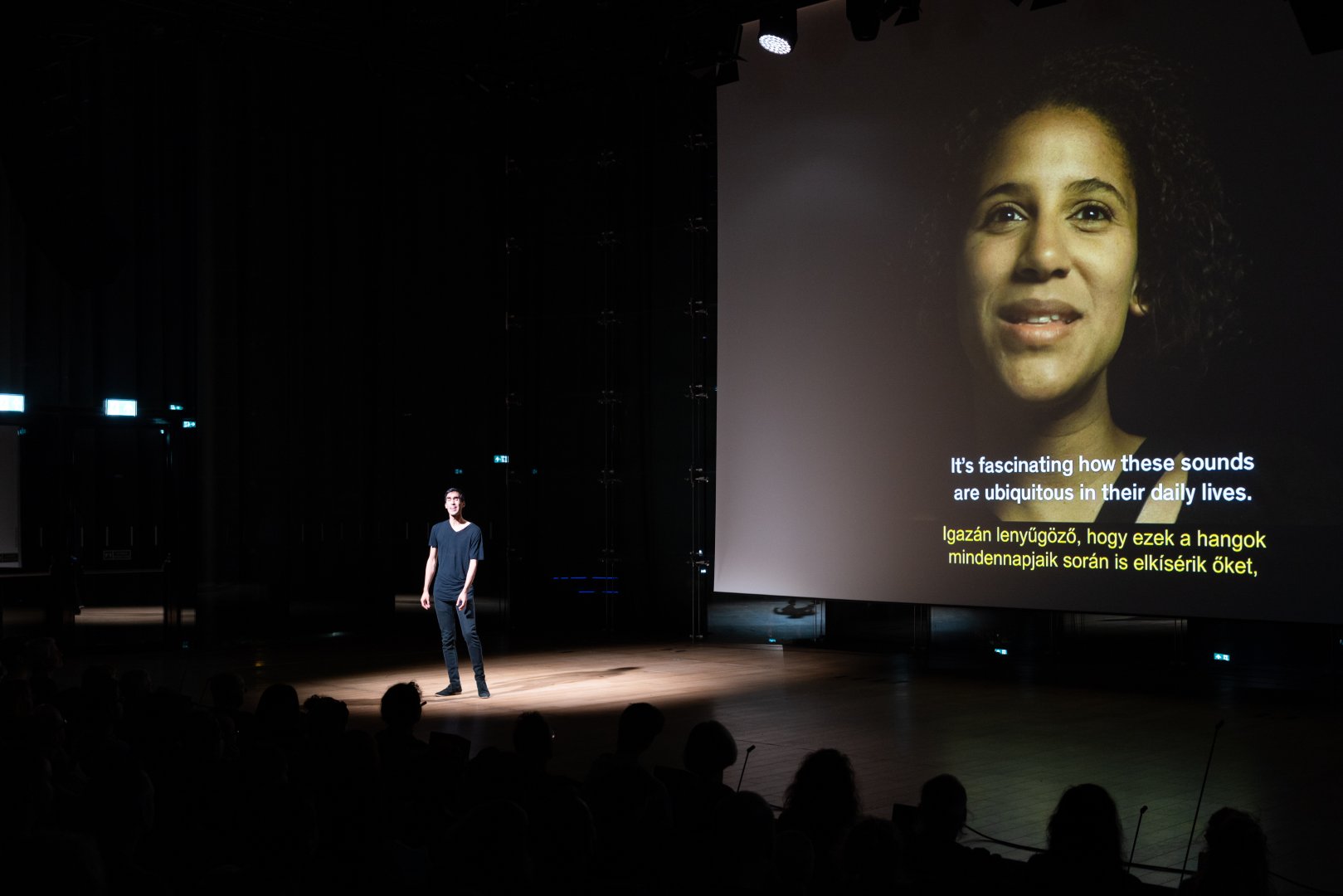The 2023 Átlátszó Hang (Transparent Sound New Music Festival), offered a plethora of alternative music events from 7 Jan – 5 Feb. It’s curated every year by a cooperative of Hungarian creators and collaborators from other European nations who provide a valuable cross-border conduit for new sonic languages. This year, so far, the festival has presented 27 events, 14 of which were music concerts in Budapest.
As evidenced by the full houses I witnessed in this festival, I am certainly not alone in my quest for new and adventurous sounds. I attended 10 of the 14 performances and I’ve singled out just a few to comment on.
From beginning to end, György Ligeti’s soul was hovering above it all. For the opening concert at the Liszt Academy, the Budapest Sound Collective conducted by Gergely Dubóczky commemorated Ligeti’s 100th birthday with a clever interweaving of short works by Balázs Horváth, Hans Abrahamsen, Daniel Láposi, Ákos Lovázs, Matej Bonin, and Marcell Dargay among four mass parts from Ockeghem’s 15th century Requiem. The contrasts between the new and the old created a bewitching mind-flip throughout, juxtaposing Ockeghem’s medieval liturgical limits to the 21st century’s rule-free soundscapes.
Dubóczky and the Collective ably traversed the stylistic requirements of both centuries and gave each composer’s works a radiant spotlight – particularly the two striking pieces by Abrahamsen. Dubóczky’s podium presence was electrically charged, which in turn ignited the orchestra and the audience, whose first and final applause was the sound of joyful spontaneous combustion.

On 17 Jan, the Serbian-Hungarian poet, actress, and improvisational vocal artist Katalin Ladik (celebrating her 80th year) graced the stage at FONÓ. Our introduction to her was via Kornél Szilágyi’s documentary film entitled “Sound Cage” that traced her career during her Dada-esque and Fluxus-influenced days when, in addition to her live solo shows and film appearances, she also played the theremin and performed naked. This evening, more modestly clad, Ladik took the stage to perform two of her uniquely vocalized (with squeaks, growls, glottals, and breath) poetry selections. They were the focus of the evening’s chamber works that also included those of Pauline Oliveros, Samu Gryllus, and Jalalu-Kalvert Nelson, all of which were performed by the seven-member Austrian ensemble Studio Dan, conducted by Csaba Ajtony. Oliveros’ “Pebble Music,” required the instrumentalists to throw stones on the floor, as rhythmically directed by the score, and Gryllus’ “Two Demilitarisation-Studies” (inspired by John Cage) featured an amusing bouncing rubber ball choreography within the audience on a carefully timed schedule — all of which further tweaked our ears in this rather otherworldly sound-circus.
British composer Trevor Wishart also delved into the realm of the human voice, but in a completely different manner. For his presentation on 26 Jan at the Budapest Music Center Library, he had recorded interviews and conversations among random people from the general public, then wove those vocal tracks into a webwork of electronica, and called it an opera: “Encounters in the Republic of Heaven.” He used eight tracks for eight speakers for the 4-act electro-acoustic creation – which was sometimes a choral chaos or a monologue, and other times a rhythmic jungle of voices and atmospheric noises. This newly-defined version of opera ended with fuzzy rainstorm effects in a slow fade.

In the same venue on 23 Jan, alto saxophonist Erzsébet Seleljo and her sister, pianist Irén, gave a memorable program called “Unbroken Silence” for which they requested the audience not to clap until the end. As both a duo and as soloists, they exhibited masterful skill in seven fascinating compositions by Ichiro Nodaira, Zoltán Jeney, Andrius Maslekovas, Michael Coleman, József Sopróni, and Edison Denisov. Of special interest to me was Maslekovas’ piano solo “Splinters of Broken Silence” with a suspended musical language that defied gravity. Irén’s impeccable rendition ably assisted the levitation.
The closing concert at the BMC on 5 Feb, the UMZE Ensemble under the direction of Gergely Vajda, hosted guests from France. Two Hungarian premieres of scores by Diane Soh and David Hudry were featured alongside two world premieres by Benoît Sitzia and Samu Gryllus, which were commissioned by UMZE for this festival. Gryllus’ “krr, dmm, taa” employed Katalin Koltai’s specially retrofitted ‘Ligeti Guitar,’ which gave her magnetic capo engineering based on Ligeti’s parameters. This intriguing debut further channeled the soul of Ligeti into the room. Aurél Holló’s delightfully jazzy “blue note, red note” capped off the grand finale.

The 19 Jan workshop and performance by Gabriel Dharmoo at the Hungarian House of Music brought another kind of vocal evening: learning how to improvise with every conceivable kind of sound, both in a chorus and alone. He invited the group Soharóza to demonstrate instantaneous improvisation before he directed the audience to form a lively five-part chorus of crazy noises.
That was just an innocent prelude to what came next: a mock-documentary film “Anthropologies imaginaires.” In it, Dharmoo’s semi-serious solo performance of various vocalisms from unknown native tribes around the world were paired with semi-serious interviews with musicologists with mysteriously odd names. It quickly became apparent that the whole narrative was total satire, poking fun at multi-cultural wokeness, virtue-signaling, and culture wars. The film is a stroke of genius that turns the collective West’s broken mirror back on itself. The last screen image was of a silent scream. Ligeti would have loved it.











